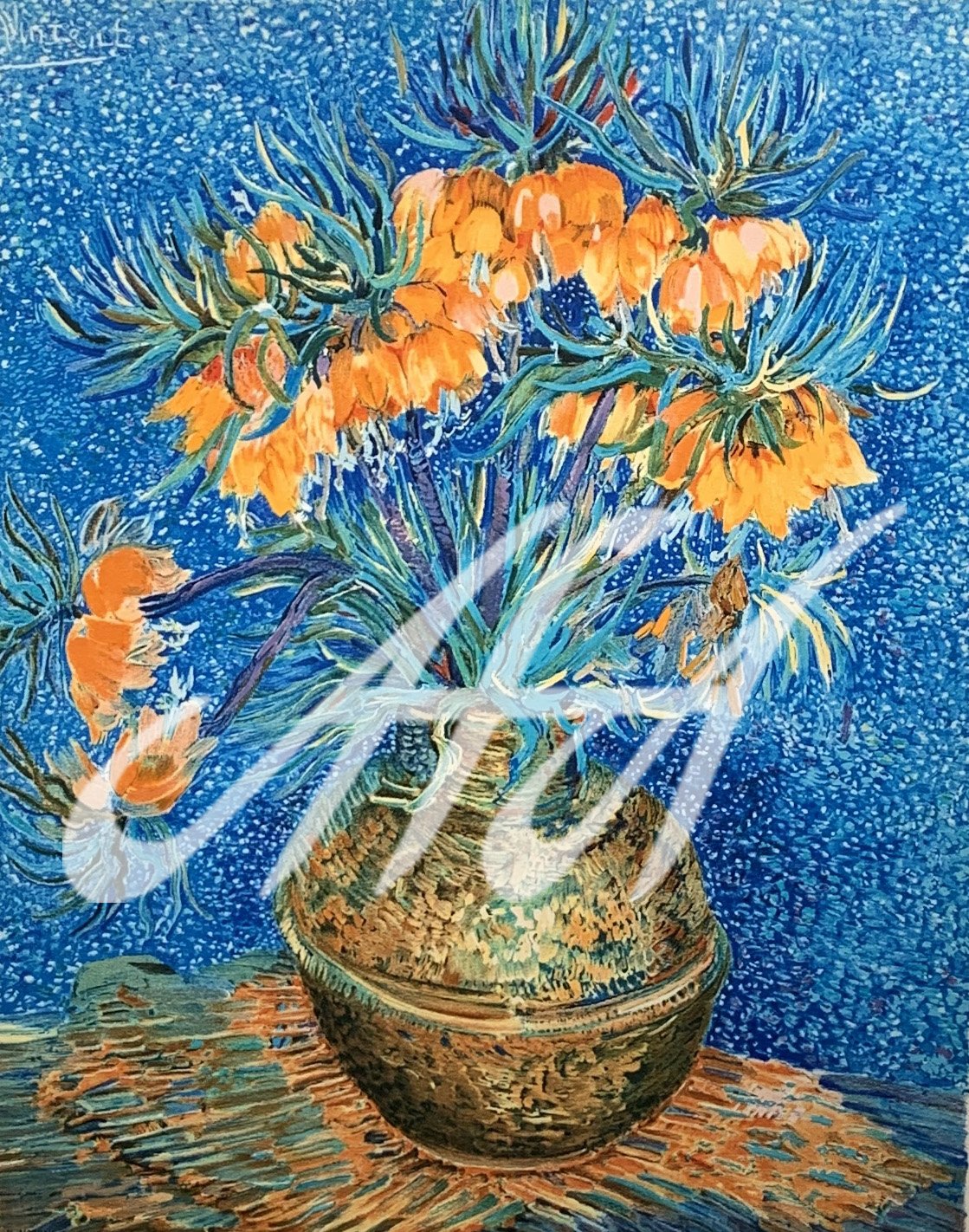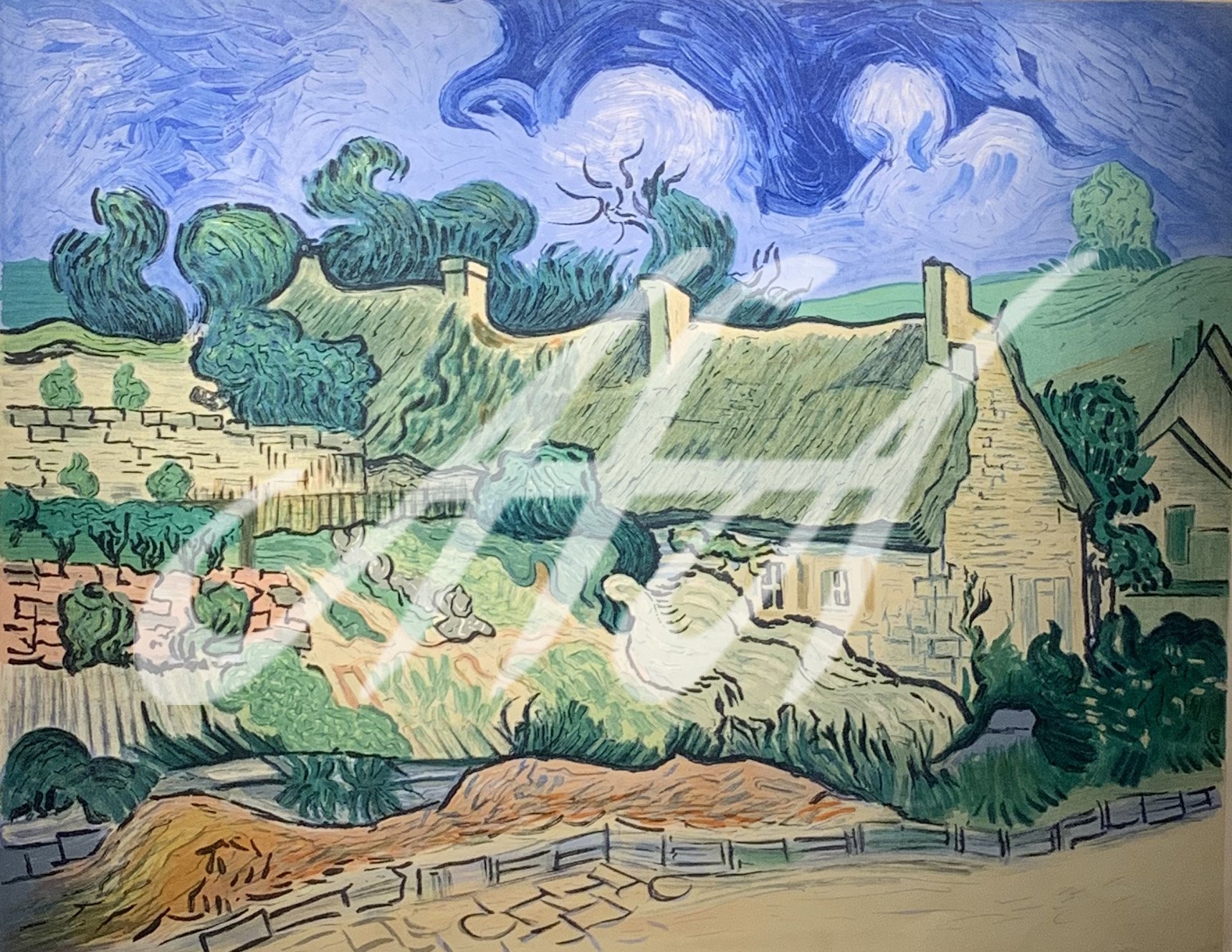Vincent van Gogh
(Dutch, 1853 - 1890)
“If you hear a voice within you say ‘you cannot paint’, then by all means paint, and that voice will be silenced.”
— Vincent van Gogh
One of the world’s most famous artists, Vincent van Gogh, created about 2,100 artworks in just over a decade, including around 860 oil paintings. Most are from the last two years of his life. His subjects include landscapes, still lifes, portraits, and self-portraits. His style is distinguished by bold colors and dramatic, impulsive, and expressive brushwork that made a unique and significant contribution to the substance of modern art. Van Gogh would spend most of his life in poverty; his work did not rise to fame until after he had passed away. His recognition rose considerably after a show in Paris in March of 1971.
Van Gogh was born in Groot-Zundert, in the Netherlands, on March 30, 1853. He was the oldest of six living children, however his parents had had a stillborn child before his own arrival, and had given them both the same name. Van Gogh was born exactly one year after his late brother, and as a child he would visit the grave that had his same name and same birthdate etched on the headstone. Interestingly, Van Gogh did not initially appear to have much artistic ambition, but instead excelled with language. He became fluent in Dutch, French, German, and English.
With financial struggles at age 15, Van Gogh left school and began working. He worked at his Uncle Cornelis’ art dealership in The Hague called Goupil & Cie. In 1873, he relocated to the Groupil Gallery in London, where English culture immersed him. He loved the writings of Charles Dickens and George Eliot, and visited art galleries when he had the chance. What would be a continually troublesome love life began with Eugenie Loyer, his landlady’s daughter. He fell in love with Loyer but she rejected him, sending Van Gogh into a breakdown and leading to his termination at the firm. Van Gogh began teaching at a Methodist boy’s school and became seriously religious during this time. His family had always been religious, but it was not until this point in his life he really engaged himself deeply with it. He worked on becoming a minister, and prepared to take the entrance exam to the School of Theology in Amsterdam. After a year of study, he refused to take the Latin exams and they denied him entrance.
His artistic career spanned only ten years. In the fall of 1880, Van Gogh moved to Brussels where he began working on informally acquiring the skills of an artist. While his younger brother Theo supported him financially, Vincent studied books by masters such as Charles Bargue. Over the next few years, he moved around quite a bit as he developed himself as an artist. His early works mostly portray still lifes and peasant laborers, and lack the vibrant color that would characterize his later work. In March of 1886, Vincent stayed at his brother’s house uninvited in Paris. It was there in Paris where he first encountered and was inspired by the light and colors of Impressionist art, and also where he met members of the avant-garde, including Émile Bernard and Paul Gauguin, who were establishing Post-Impressionism. Van Gogh’s approach to his local landscapes and still lifes changed significantly. Brighter color was one distinguishing element of his unique style, which found full form in Arles in the south of France in 1888. Both his use of color to express and emote, and his loose, confident brushwork significantly influenced Expressionism, Fauvism, early abstraction, and other aspects of 20th century art.
Gauguin and he became close colleagues, painting and living together in Arles in the “Yellow House”, where some of Van Gogh’s most recognizable work would be completed. While Van Gogh had been struggling, but functioning, for quite some time, his psychological and physical health began to decline further. In Arles, France, the artist, living on coffee, bread, and absinthe in late 1888, also attempted to eat paint and swallow turpentine in an attempt to poison himself. His friend and painting companion, Gauguin, after feeling for some time that they were drifting apart, admitted to Van Gogh that he intended to leave and went to a hotel on December 23rd. After 10 pm, hours after Gauguin had been gone, Van Gogh, who struggled to remember his moments of madness, sliced off almost his entire left ear with a razor, leaving just a small piece of the lobe remaining. Wrapping his head and wearing a hat, he presented the newspaper-wrapped ear outside a nearby brothel to a young maid named Gabrielle Berlatier, with whom he was most likely acquainted, telling her to keep it carefully. She reportedly fainted. The next day, returning to the Yellow House, Gauguin found onlookers and police at the residence. The police found blood all over the home, including handprints on the wall leading upstairs. Van Gogh lay in bed so covered in blood officials originally presumed him lifeless, although inspection revealed he lived. They admitted him to the Hôtel-Dieu hospital in poor condition, weak from blood loss and suffering seizures. The hospital released him two weeks later. Although there are numerous speculations, he never explicitly declared his line of reasoning for cutting off his ear. When later asked by a friend, Van Gogh would simply respond that it was personal. He turned to painting but was unable to find the peace he sought. His episodes of confusion and depression continued and he elected hospitalization to help him cope, but after a year felt stifled with it and left.
In January of 1890, Theo and his wife Johanna gave birth to a son, naming him after Vincent. Although these were happy tidings, it’s possible that Vincent felt his own intimacy with his brother shrinking. Vincent rented a room in Auvers where Dr. Paul Gachet treated him. On July 27, 1890, in the Auvers wheat fields, Van Gogh shot himself in the chest. He did not immediately die, instead stumbling back to his room where he admitted he had shot himself and would spend his last 30 hours receiving care and getting to see his brother. Vincent asked Theo to take him home, and the artist died in the arms of his beloved brother at 37 years old. His memory has become the archetype of a “tortured artist.” Theo reported Vincent’s last words as, “The sadness will last forever”. Theo’s wife, Johanna, found many of Van Gogh’s paintings and saved them, however she discovered that a large number were destroyed. Sadly, it turned out Van Gogh’s mother was responsible for throwing away crates of his art.
American Fine Art, Inc. is proud to feature the original works and limited editions of Vincent Van Gogh. Visit our 12,000 sq. ft. showroom in Scottsdale, Arizona or call today. Our website is offered only as a limited place to browse or refresh your memory and is not a reflection of our current inventory. To learn more about collecting, pricing, value, or any other art information, please contact one of our International Art Consultants. We look forward to giving you the one on one attention you deserve when building your fine art collection. We hope you find our website helpful and look forward to seeing you in Scottsdale soon.



